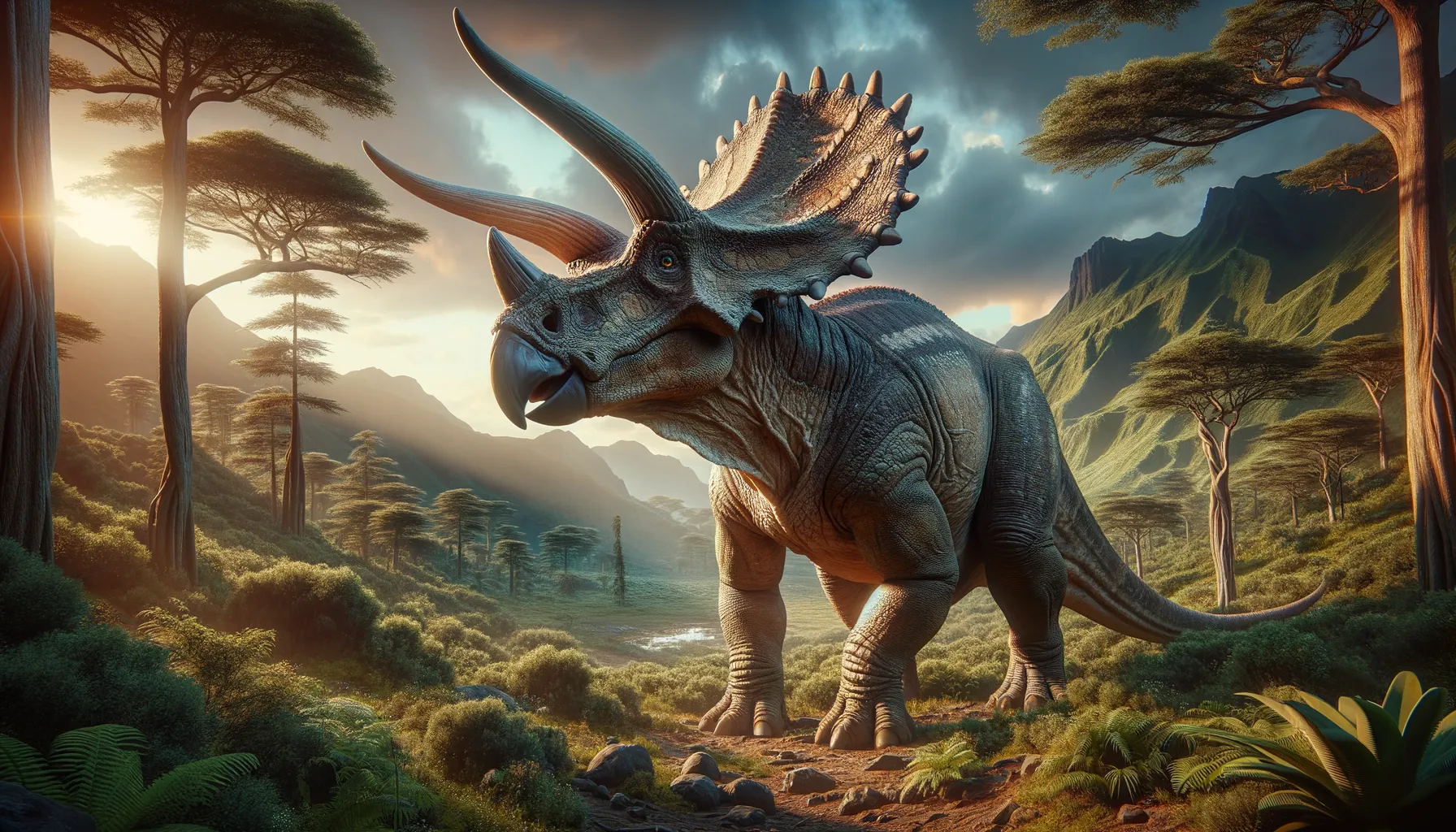
Diabloceratops
Discover the devil-horned marvel!
Period
Cretaceous
Length
Roughly 16 feet long.
Height
About 6 feet at the shoulder.
Weight
Approximately 1.5 tons.
Diabloceratops, meaning 'devil horned face', was a ceratopsid dinosaur that roamed the Earth during the Late Cretaceous period. Known for its striking horns and broad frill, it was a herbivore, grazing on the lush vegetation of its time. This dinosaur is part of the horned dinosaurs family, closely related to the more famous Triceratops. Its fossil remains provide insights into the diverse ceratopsian species that existed about 80 million years ago.
Diet
Diabloceratops was an herbivore, feeding primarily on vegetation. With a beak-like mouth, it was adept at nipping through ferns and cycads, making the most of its plant-rich habitat.
Hunting
As a herbivore, Diabloceratops did not engage in hunting. Instead, it relied on its horns and physical presence for defense against predators. The dinosaur likely traveled in groups to bolster its safety.
Environmental challenges
Diabloceratops lived in a dynamic environment where climate changes posed significant challenges. Shifts in vegetation patterns could affect food supplies, forcing it to migrate or adapt dietarily. Predators were a constant threat, necessitating vigilance and the use of its formidable horns for defense. Competition with other herbivores also meant securing territory that provided ample feeding opportunities.
Speed
Slow-moving due to its heavy build.
Lifespan
Estimated around 10 to 20 years.
First discovery
Discovered in Utah in the early 2000s.
Fun Facts
- Diabloceratops means 'devil horned face', inspired by its two large, curved horns above its eyes.
- This dinosaur lived around 79 million years ago during the Late Cretaceous period.
- Diabloceratops was a member of the ceratopsian family, which also includes the famous Triceratops.
- It was discovered in what is now Utah, USA, highlighting that North America was home to many diverse dinosaur species.
- The Diabloceratops was relatively small compared to other ceratopsians, measuring about 18 feet in length.
- Its unique skull features contribute valuable information to our understanding of horned dinosaur evolution.
- Diabloceratops likely used its horns and frilled neck for defense against predators and possibly in mating displays.
Growth and Development
Diabloceratops juveniles presumably grew rapidly, reaching near-adult size in just a few years to increase their survival odds against predators. Their frills and horns gradually developed with maturity, playing a crucial role in display and defense. Like many dinosaurs, they likely experienced growth spurts influenced by environmental factors and available nutrition.
Habitat
Diabloceratops thrived in the lush, subtropical environments of what is now known as North America. Its habitat was characterized by abundant plant life, including ferns and conifers. The region provided not just food but also dense cover, which was crucial for evading predators. Seasonal changes and climatic shifts would have influenced its movements, likely leading to seasonal migrations within the region.
Interaction with other species
Diabloceratops interacted frequently with other herbivorous species, which sometimes resulted in competition for food resources. Its prominent horns did not only serve as a defense mechanism but also may have played a role in social interactions with other ceratopsids. Predatory dinosaurs within its environment posed constant threats, leading to evolved defensive social behaviors such as herding and cooperative vigilance.
Natural lifespan
Diabloceratops likely had a natural lifespan of around 10 to 20 years.
Reproduction
Diabloceratops reproduced through laying eggs, as was common among dinosaurs. Nests were likely built in secluded areas to ensure safety from predators. Parental care might have been involved, where hatchlings were protected and guided until they could survive independently. This would have included teaching them feeding strategies and defensive movements.
Social behaviour
Diabloceratops is believed to have lived in small groups or herds, which provided safety in numbers against predators. These social structures allowed for cooperative feeding and migration, enhancing the survival of the group. Within the herd, the horns and frills of individuals likely played a role in establishing dominance and mating rights.
Fossil locations
The primary fossil remains of Diabloceratops have been found in Utah, USA, offering a glimpse into its distribution. These sites reveal crucial information about the ecosystem it inhabited and help paleontologists understand the diversity of ceratopsian dinosaurs in the region. Ongoing excavations continue to uncover additional details, adding to our knowledge of this intriguing species.
